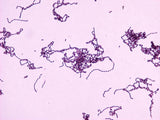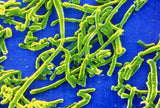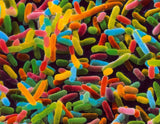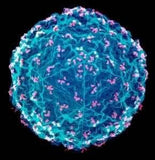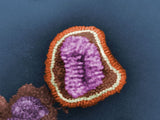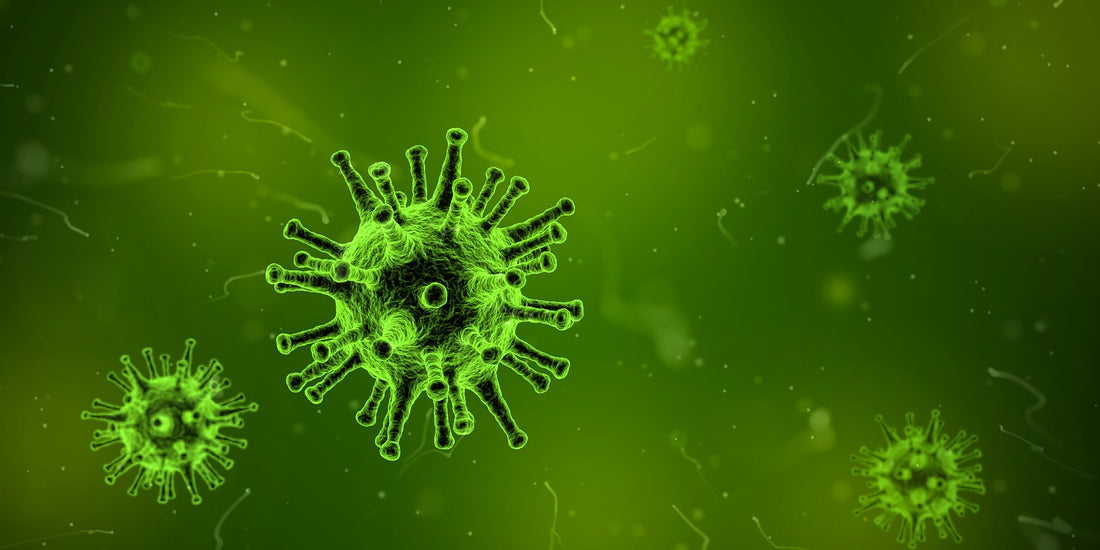
5 Common Species of Bacteria on Phones & What to Do About Them
Share
There it is - your sparkling ivory white iPhone X or flawless black Galaxy 8. No cracks, no smudges, no fingerprints. There are no chip or muffin crumbs in the creases of your case neither.
But a microbiologist comes along and swipes the screen with a cotton swab. They slide a petri dish under a microscope and behold...that spotless device of yours is a mobile cesspool for microbes.
Germs thrive on your smartphone but it shouldn’t surprise us considering how time we spend holding them. They won’t make you sick for the most part, but some bacteria on phones will if given the opportunity.
So, deny them that chance with regular disinfecting and cleaning. By doing so, you can avoid using too many sick days, doctor’s visits and medicines that taste awful even if they work.
Just How Dirty is Your Phone?
Very.
And even in this world of fake news, science has proven that phones carry more germs than toilet seats. A lot more.
In one study, researchers at the University of Arizona discovered that phones carry 10 times more bacteria than toilet seats. Another study found as many as 17,000 bacterial gene copies on high schoolers’ phones.
Gross. All of a sudden, public bathrooms aren’t looking so bad, and you have a good reason not to spy on your teenager’s texts.
The Usual Suspects - Bacteria That Like to Call Your Phone Home
Before we look under the microscope, we have a disclaimer for you: don’t panic too much. We know that some of you are busy prepping your underground bunkers for a microbe apocalypse.
But as scary as germs are, you’re unlikely to get ill from the majority of them. You’ve got an immune system, remember? And some live in or in you already. Regardless, here’s a look at what’s lurking on your phone screen.
Common Bacteria on Phones
|
Germ |
|
|
|
|
Streptococcus
|
These microscopic baddies look like twisted chains of circular specs. |
They’re responsible for, you guessed it… “Strep Throat” (streptococcal pharyngitis) as well as other illnesses including pneumonia, meningitis and sepsis. |
Doctors treat most of the infections they cause with antibiotics. Pneumonia and meningitis require prompt treatment. Sepsis, if not treated immediately and aggressively, is fatal.
|
|
Staphylococcus
|
Less twisted (but no less troublesome) than Streptococcus germs, these bugs look more like clusters of grapes or pebbles.
|
They cause a host of minor conditions such as folliculitis, ear infections to the more serious ones such as sinusitis and gastroenteritis (stomach flu). The fearsome, drug-resistant species, MRSA, can cause a long list of infections that affect any part of the body.
|
Treatment with antibiotics usually resolves staph infections with few or no complications. On the other hand, MRSA requires very specific and powerful drugs to fight the bug, not to mention intensive care in more severe cases.
|
|
Corynebacterium
|
These bacteria will either look rod or club-shaped depending on their life stage.
|
They’re responsible mainly for Diphtheria, a serious infection which you likely got vaccinated for as a kid. This bacterial strain can also cause skin infections, pneumonia and endocarditis (inflammation of the heart).
|
Antibiotic treatment is the main line of treatment for corynebacterium infections. More serious issues such as endocarditis require aggressive antibiotic drugs and surgery if damage to the heart is severe.
|
|
E.Coli
|
Rod-shaped bacteria you’re probably familiar with, and if not, they’re certainly familiar with you (since they live in your body).
|
Despite what food recalls suggest, E.Coli is not entirely harmful. But the more harmful strains cause gastrointestinal illness, urinary tract infections and meningitis - all of which can lead to life-threatening consequences. |
Like the three species mentioned above, E.Coli responds to various antibiotic drugs. |
|
Cold
Flu
|
In case you thought we weren’t showing viruses any love, we included these two. They typically take a spherical or circular shape, with rough or spiky edges. |
You know what it’s like to have either of these two. Unless you’re some sort of Marvel character, the cold or flu has sickened you at some point. In fact, the 2017 - 2018 cold and flu season was a particularly terrible one.
|
The aches, the fever, the chills, the coughs, the fatigue - they usually go away on their own. But of course, some people get hit much harder with these viruses, depending on the strain or the state of their health.
|
We could get way more descriptive and scientific, but the point here is to show you how many germs call your phone home. Realistically, any species of germs can find itself on your device, but the ones listed above tend to be the common offenders.
How to Disinfect a Phone Without Damaging It
Now that you’re a bit spooked and ready to buy a hazmat suit, let us remind you again that the likelihood of getting sick from these germs is very low. The risk of contracting an illness almost drops to zero if you disinfect your phone regularly. The good thing about killing bacteria on phones too is that it’s dirt simple (excuse the pun).
Let’s start with some don’ts.
Don’ts
- Don’t use alcohol or harsh chemical cleaners to disinfect your phone (this can damage the unit if it seeps into ports or jacks)
- Don’t use harsh cloths or paper towels to wipe screens as this can scratch delicate screen surfaces
Do’s
- Use a specially-formulated cleaner designed to clean and disinfect screens, and contains no harsh chemicals
- Use a screen cleaning product like our Screen Shine cleaner and an antimicrobial cloths
The Germ Killing Wipe-Down
- Turn your screen off (this allows you to see smudges, fingerprints, and marks)
- Spray some WHOOSH! Screen Shine on a microfiber cloth
- Gently wipe the surface of your screen with the cloth
- Use the dry side of your microfiber cloth to shine the screen
And voila! The phone screen bacteria you normally come in contact with will die off for the most part.
Practical Tips for Minimizing Bacteria on Phones
- Stop toilet texting and be one with nature
- Wash your hands frequently, especially after touching public surfaces
- Beware of surfaces you touch throughout the day
- Be careful who you share your phone with
- Limit your phone’s contact with small children
- Use your phone less if doing a dirty or messy job
- Get a case already! (it’s like a barrier between your phone and bacteria)
Make Your Phone a Germ-Free Zone
You know those commercials for household cleaners that say, “kills 99.9%” of germs? Well, keep them in mind because you can never fully rid a surface of bacteria - your phone screen included. But you can destroy almost all of them, which is more than enough to keep you and your family healthy.
All you need is our handy Screen Shine and a microfiber cloth to do the trick. Combine our powerful, germ-busting tools with more common sense hygiene practices, and you can soon call your phone a completely germ-free zone.
Don’t believe us? Watch the video below, where we take to the streets and measure bacteria levels on passerby’s phones before and after using WHOOSH! Screen Shine.

